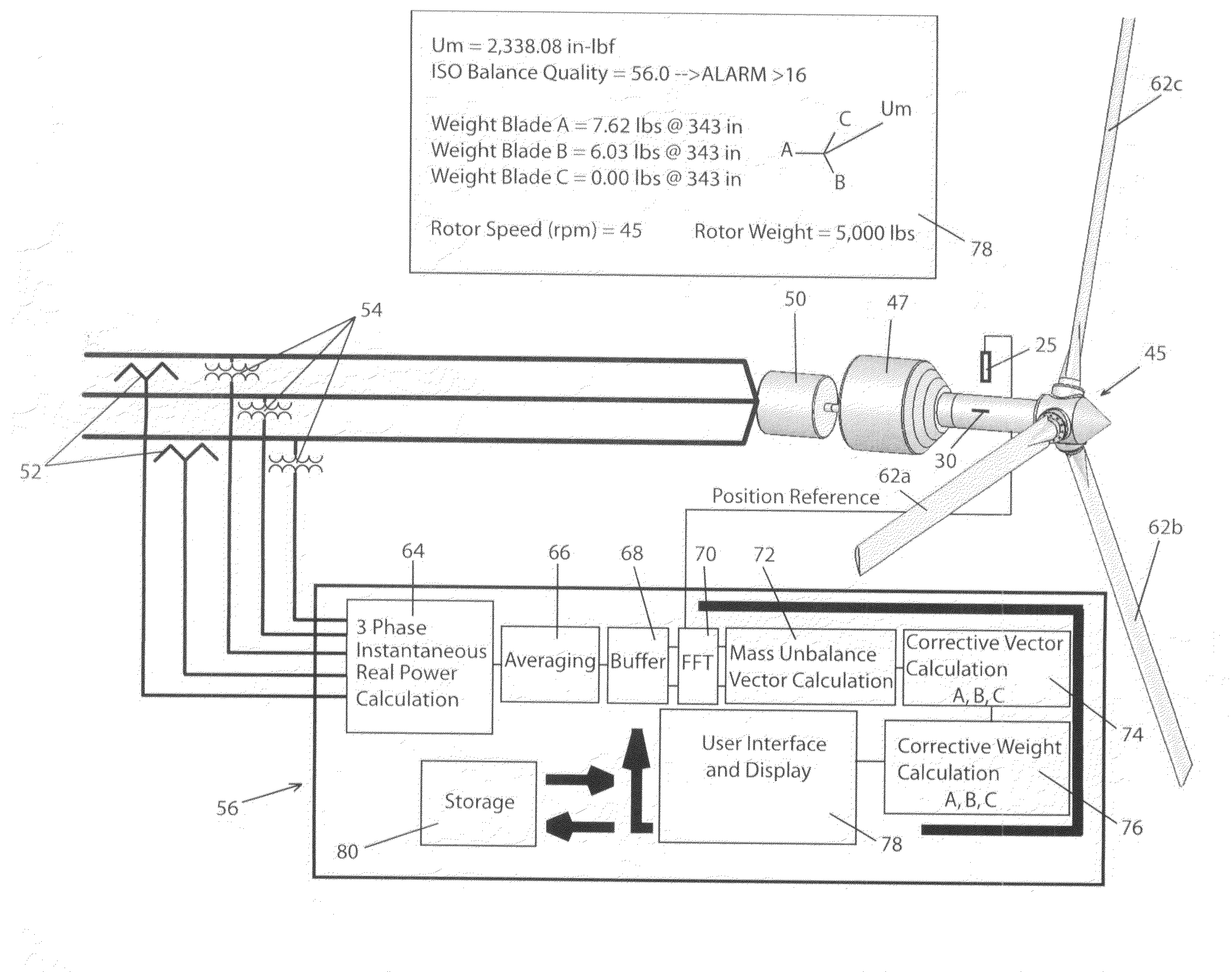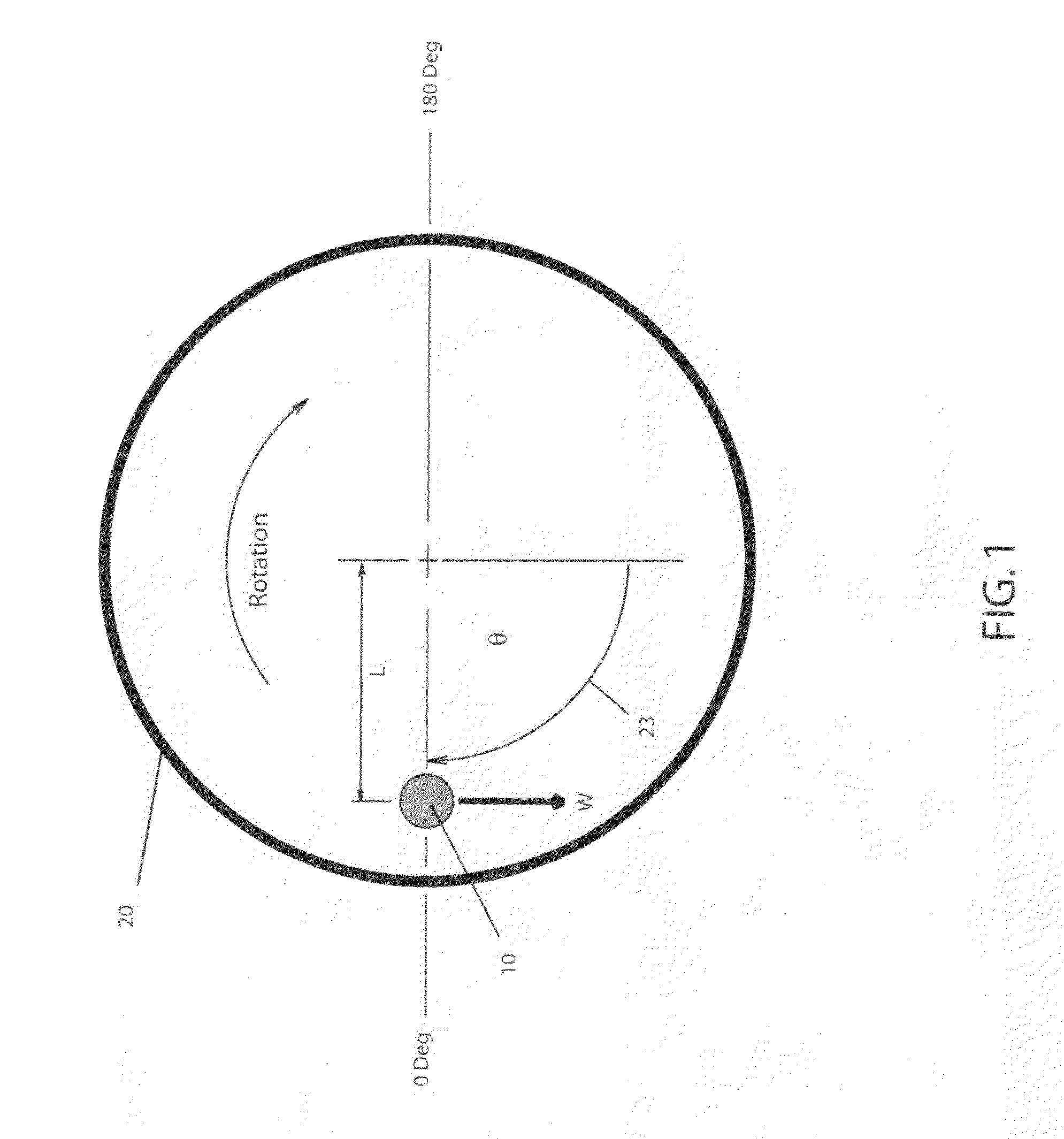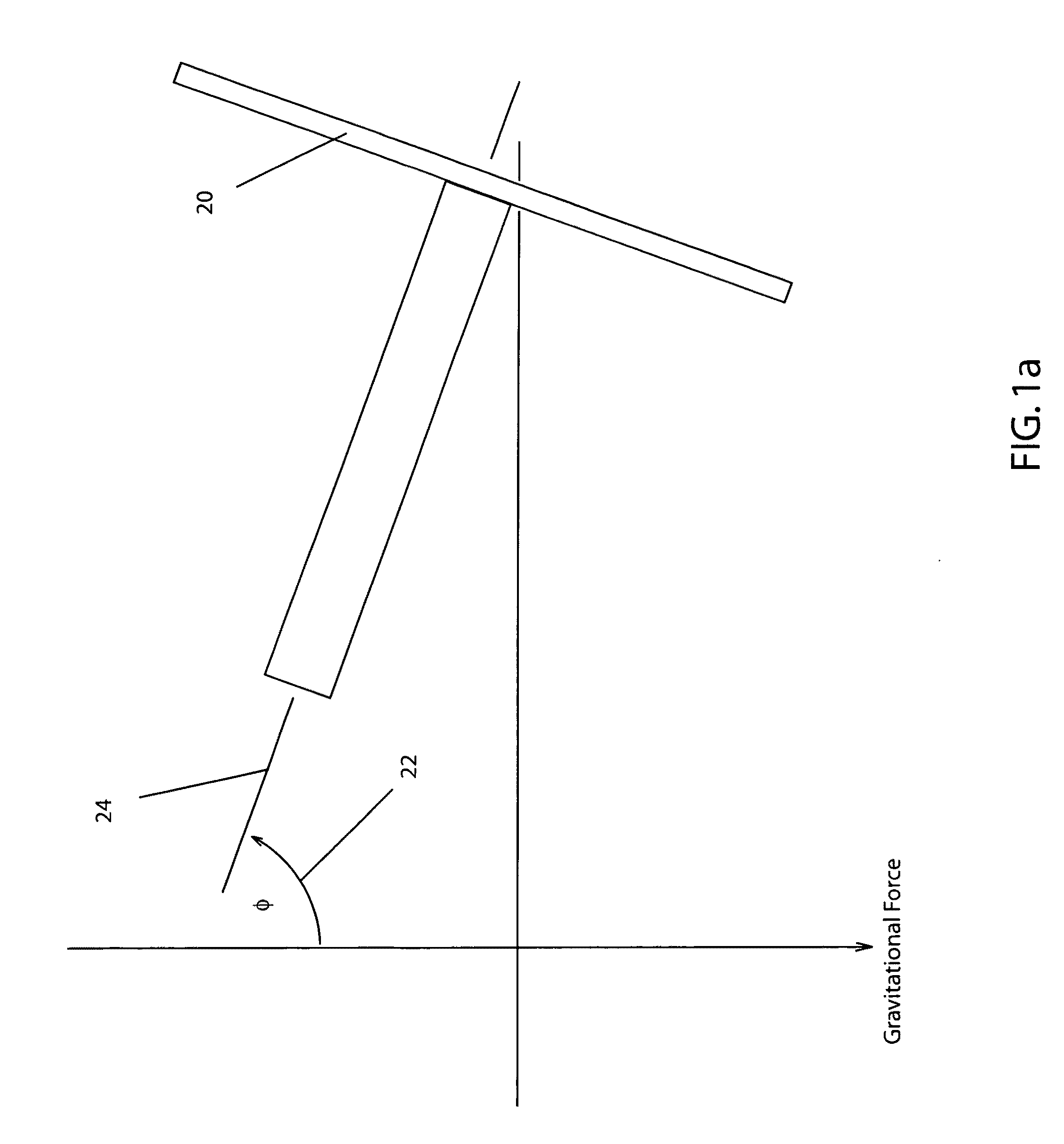Method and apparatus for in situ unbalance and corrective balance determination for a non-vertical axis rotating assembly
a non-vertical axis rotating assembly and in situ unbalance technology, applied in adaptive control, computer control, instruments, etc., can solve the problems of increasing the necessary wind speed for power generation, reducing the mechanical life of connected components, and time-consuming methods
- Summary
- Abstract
- Description
- Claims
- Application Information
AI Technical Summary
Benefits of technology
Problems solved by technology
Method used
Image
Examples
Embodiment Construction
FIG. 1, 1a Preferred Embodiment
[0054]In order to appreciate the method disclosed, one must first understand basis upon which the objects of the invention can be realized. FIG. 1 is a free body force diagram which illustrates the static forces due to the center of mass not concentric to the axis of rotation. The center of mass may be represented by a mass 10 displaced at distance L from the axis of rotation on a disk 20 with an axis of rotation 24 having an axial angle of displacement 22 of 90 degrees relative to the force of gravity. The torque applied to axis of rotation 24 necessary to maintain equilibrium at any axial angle of displacement 22 and any rotational angle of displacement 23 is expressed by:
T=W*L*cos(θ)*sin(Φ),[0055]where[0056]Φ=axial angle of displacement 22 from gravitational force,[0057]θ=rotational angle of displacement 23 from a reference where a zero value of θ and the cos(θ) is positively maximum,[0058]L=distance of the Mass from the axis of rotation,[0059]*=mul...
PUM
 Login to View More
Login to View More Abstract
Description
Claims
Application Information
 Login to View More
Login to View More - R&D
- Intellectual Property
- Life Sciences
- Materials
- Tech Scout
- Unparalleled Data Quality
- Higher Quality Content
- 60% Fewer Hallucinations
Browse by: Latest US Patents, China's latest patents, Technical Efficacy Thesaurus, Application Domain, Technology Topic, Popular Technical Reports.
© 2025 PatSnap. All rights reserved.Legal|Privacy policy|Modern Slavery Act Transparency Statement|Sitemap|About US| Contact US: help@patsnap.com



